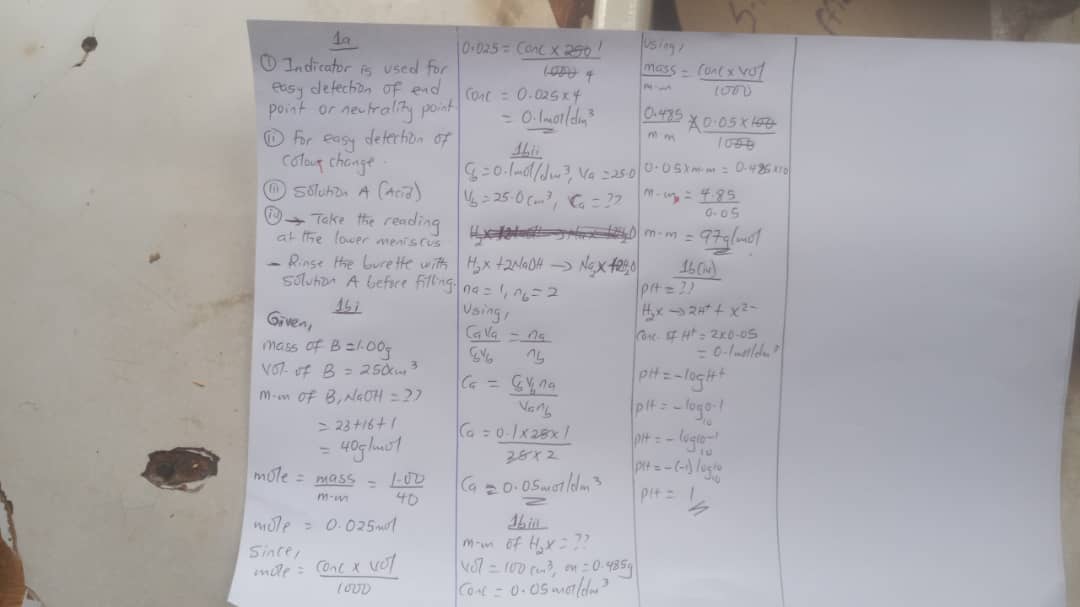NECO GCE 2023 CHEMISTRY ANSWERS

(3ai)
Hydrogen sulfide (H₂S).
(3aii)
One chemical test that can be used to identify hydrogen sulfide (H₂S) is the lead acetate test. In this test, lead acetate paper or solution is exposed to the gas. If hydrogen sulfide is present, a black precipitate of lead sulfide (PbS) forms.
(3aiii)
Hydrogen chloride (HCl) and Ammonia (NH₄). Both of these gases dissolve in water to form hydrochloric acid (HCl) and ammonium hydroxide (NH₄OH), respectively.
(3bi)
I. Melting Point Determination:
Procedure: Measure the melting point of the substance using a melting point apparatus. Pure substances usually have a sharp and well-defined melting point, while impurities can cause a melting point depression or a broader range.
Observation: A narrow and sharp melting point indicates higher purity, while impurities typically cause the melting point to be lower and more spread out.
II. Chromatography:
Procedure: Use chromatographic techniques, such as thin-layer chromatography (TLC) or gas chromatography (GC), to separate and analyze the components of a substance. Pure substances exhibit well-defined and separated spots or peaks, while impure substances show additional spots or peaks.
Observation: A clean and well-separated chromatogram suggests a purer substance, whereas the presence of additional peaks or spots indicates impurities.
(3bii)
When sulfur(IV) oxide gas (SO2) is bubbled into an acidified solution of potassium heptaoxochromate (VI) (commonly known as acidified potassium dichromate solution), the orange color of the solution will change. The orange dichromate ion (Cr2O7^2-) is reduced to the green chromium(III) ion (Cr^3+). The balanced chemical equation for this reaction is:
Cr₂O₇²⁻ + 3SO2₂+ 2H⁺—> 2Cr³⁺ + 3SO₄²⁻ + H₂O
The orange dichromate ion is reduced to green chromium(III) ions (Cr³⁺), and sulfur dioxide is oxidized to sulfate ions (SO₄²⁻). The change in color from orange to green serves as a visual indication of the reduction of chromium(VI) to chromium(III).
(3biii)
I. Aqueous Sodium Trioxocarbonate (IV) (Sodium carbonate, Na₂CO₃):
Sodium trioxocarbonate (IV) is a basic salt. When dissolved in water, it forms a solution that has a pH greater than 7. Therefore, the effect on litmus paper would be as follows:
Red Litmus: Turns blue.
Blue Litmus: Remains blue.
II. Aqueous Ammonium Trioxonitrate (V) (Ammonium nitrate, NH₄NO³):
Ammonium trioxonitrate (V) is a neutral salt. When dissolved in water, it does not significantly affect the pH of the solution. Therefore, the effect on litmus paper would be:
Red Litmus: Remains red.
Blue Litmus: Remains blue.
=====

Leave a Reply